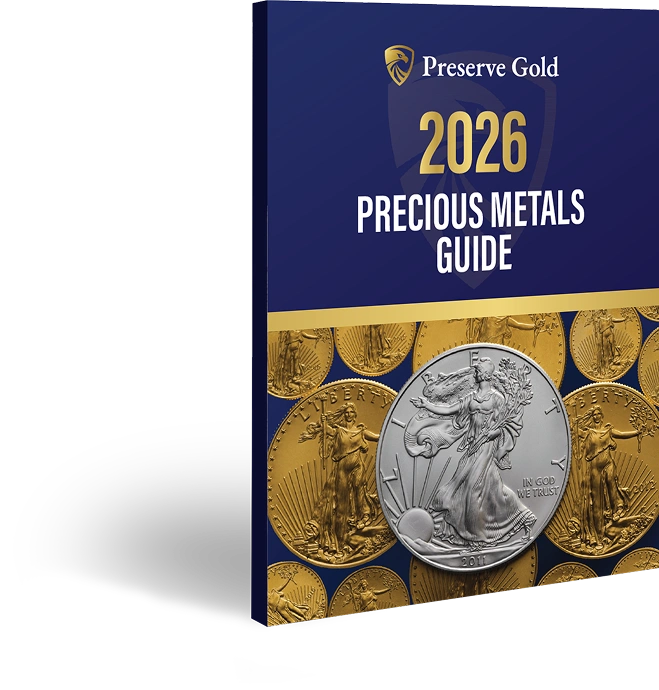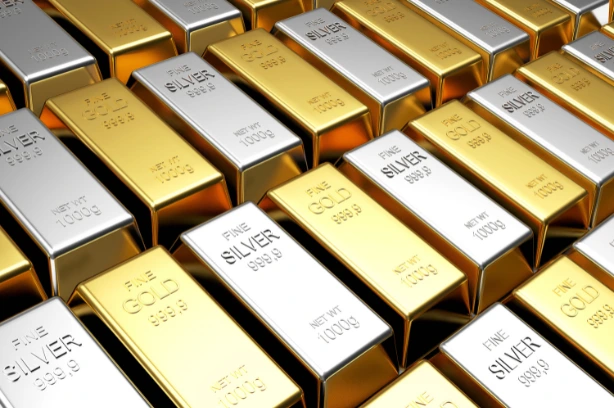Rare earth metals, sometimes referred to as rare earth elements (REEs), are critical raw materials that have been growing in the investment arena over the past several years. These elements are vital in modern technology and see widespread use across many industries, from automotive manufacturing to computer chip production.
Just as these elements are exploding in industrial fields, they’re also becoming a popular choice in the financial sector, but is investing in rare earth metals a sound financial decision? That answer depends on several factors, including the type of metal, economic influences, investment methods, and long-term growth potential. At Preserve Gold, we’ve compiled this user’s guide to walk you through the process.
Types and Categories of Rare Earth Metals
Rare earth metals consist of 17 metallic elements comprised of 15 lanthanides, yttrium, and scandium. Based on their atomic weight, REEs are divided into light and heavy categories. While both types are critical to many industrial processes, heavy REEs are usually in higher demand. These elements are also categorized based on function:
- Lighting: Europium, terbium, yttrium
- Rare earth magnets: Dysprosium, neodymium, praseodymium, samarium
- Rare earth phosphors: Cerium, europium, gadolinium
- Other technology: Gallium, germanium, hafnium, indium, rhenium
Each rare earth element, listed below in alphabetical order, is used in technological and industrial applications, including defense systems, electronics, renewable energy, and other high-tech industries.
List of Rare Earth Metals
- Cerium
- Dysprosium
- Erbium
- Europium
- Gadolinium
- Holmium
- Lanthanum
- Lutetium
- Neodymium
- Praseodymium
- Promethium
- Samarium
- Scandium
- Terbium
- Thulium
- Ytterbium
- Yttrium
Rare Earth Metals: Influences and Challenges

China currently owns 80% of the four most critical rare earth elements, including dysprosium, neodymium, praseodymium, and terbium, which has led to supply chain dependency. These challenges in direct ownership have stemmed primarily from their monopoly on REEs and other reserves, with other countries trailing in holdings as follows:
- China: 33.8%
- Vietnam: 16.9%
- Russia and Brazil: 16.1% each
- India: 5.3%
- Australia: 3.2%
- U.S.: 1.7%
In 2019, during a trade war between the U.S. and China, China exported 80% of REEs globally, dominating the marketplace. Having the upper hand in this market gives the countries with the most resources enormous power, rendering other countries that need these rare earth elements vulnerable to economic pressure. This dynamic makes it difficult for the U.S. to break into the market fully, but it can also create investment opportunities.
Remember, REEs are critical in defense, industrial, and technological production. So, how can the U.S. gain a stronger foothold in this industry when it is among the countries holding the least reserves? The U.S. can increase rare earth metals production by developing alternatives, mining its own natural deposits (reshoring production), and diversifying sourcing to global allies. China currently processes most REEs mined globally, so for the reshoring process to be effective, the U.S. needs to broaden its mining and refining methods.
Methods for Investing in Rare Earth Metals
Investors can physically own rare earths through specialized brokers who sell rare earth oxides, metals, and alloys in small investment-grade accounts. Individuals interested in building diversified investment portfolios can do so with REEs using several methods.
Futures and Options
As derivatives backing mining stocks, futures and options offer investment opportunities, providing exposure to rare earth metals’ price movements. This choice is most suitable for experienced investors.
Daily Traded Funds
In this method, individuals can use a traditional trading platform to invest in daily traded REEs as part of a broader mining stock portfolio.
Mining Stocks and Exchange-Traded Funds
Directly purchasing shares of stocks from mining companies that extract, process, and produce REEs offers individuals the opportunity to explore this industry, earning gains from their operations as they evolve.
Individuals can also buy ETFs (exchange-traded funds) and diversify their holdings with a basket of stocks from multiple mining companies as a solid way to fortify their portfolios. Leading mining companies include the following:
- BHP Group (BHP), since 1851
- Global X Disruptive Materials (DMAT), since 2008
- Freeport-McMoran (FCX), since 1988
- MP Materials (MP), since 1952
- Sprott Energy Transition Metals (SETM), since 1981
- VanEck Rare Earth/Strategic Metals ETF (REMX), since 1955
Benefits of Investing

Investing in rare earths necessitates extensive exposure to multiple mining companies, potentially allowing for greater portfolio diversification and a protective hedge by balancing more risky stocks with safer bets. In addition, this ownership creates a higher demand for emerging, renewable, green technologies, expanding the industry. Finally, the limited supply is an investor’s advantage and has the potential benefit of price appreciation.
Drawbacks of Investing
While investing in REEs has many benefits, diving into this market does not come without potential risks. When geopolitical conflicts arise, prices of these elements can become volatile due to supply and demand issues. As global power struggles permeate nations, those that dominate producing and mining REEs can cause supply chain disruptions. Finally, sustainability activists warn about the negative environmental impact of the mining industry, which can also affect company valuations.
Determining the Cost of Rare Earth Metals
Some of the same factors that make investing in rare earth metals difficult, such as supply chain issues, also influence their cost. Prices go up when industrial demand is high, especially from the technology and renewable energy sectors. Likewise, geopolitical risks and conflicts among nations’ metals trade policies impact export controls and can cause supply chain disruptions, impacting prices. Environmental concerns can also lead to more rigid regulations which influence mining operations and production costs.
The more challenges this industry faces, the more difficult it becomes to gain access to REEs. One way to circumvent this issue and provide more investors with ways to break into investing is through alternative materials and more robust recycling procedures. While the need for REEs is set to skyrocket due to the demand for emerging technologies, securing them poses a feasibility challenge. However, a promising solution is to use new methods, such as deep ocean extraction.
Future Investment Opportunities

Rare earth metals are growing as physical assets, with strategic metals providing the foundation of 21st-century manufacturing, demonstrating their long-term potential. Market analysts have pointed to projected growth as the following industries become more reliant on REEs:
- Cell phone technology
- Computer chips
- Electric and hybrid vehicles
- Fiber optics
- Solar power
- Wind turbines
Nonetheless, as investors delve into this untapped market, it’s vital to evaluate long-term risks on a regular basis. Market shifts are inevitable as some sectors of industry and technology explode, so staying ahead of the curve with professional advice and expertise is crucial. We recommend consulting with a qualified financial advisor before making any investment decisions.
Rely on the Experts at Preserve Gold
At Preserve Gold, we pride ourselves on setting the standard for gold as your trusted partner and one of North America’s top precious metals firms. Our goal is to set a new industry standard in safety, quality, and convenience. We do this by aligning with strategic partners who support our mission of putting trust and exceptional service first, forging a transparent relationship with every client we serve.
When you choose Preserve Gold, we assign a Precious Metals Specialist to support you anytime you need it. From researching to purchasing, we’re here to answer your questions and address your concerns. Our specialists will help you explore gold and silver investment strategies, as these can be a safer entry point into the more volatile market of rare earth metals.
Learn more about how you can protect your wealth through investing in precious metals with our free guide. Contact us today at (877) 444-0923 to speak to a team member.








